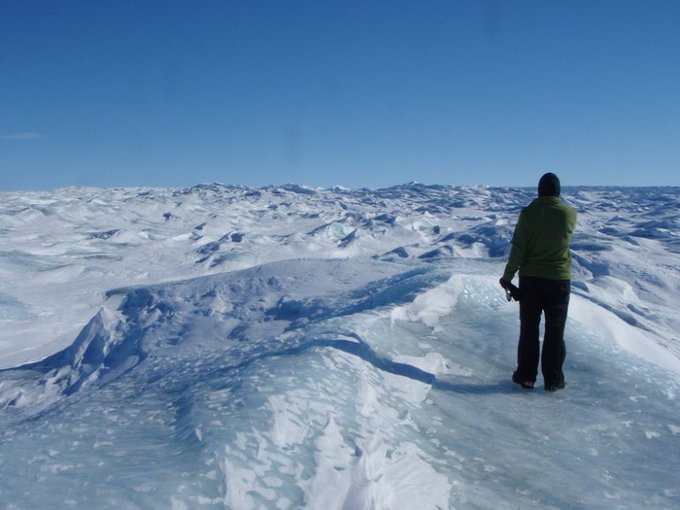
May 16, 2017
Feature Story
New Instrument May Aid Search for Extraterrestrial Life
For 2 weeks on the Greenland ice cap, scientists tested an instrument that might help us find life on icy moons with oceans beneath their crusts.

A researcher looks over the Greenland ice cap, a “frozen ocean.” Eleven scientists returned from a field campaign testing an instrument that can scrutinize holes in ice for signs of life. Someday, such an instrument might find its way to Europa or Mars. Credit: NASA/JPL-Caltech/Michael J. Malaska
Ocean worlds are on planetary scientists’ minds. More and more, evidence rolls in about the potential habitability of ice-covered bodies like Jupiter’s moon Europa or Saturn’s moon Enceladus. The findings point to heat-driven processes in their subsurface oceans that could support life. Scientists are now beginning to wonder: Could the search for life end on one of these icy satellites?
Assuming humanity does land a spacecraft on Europa or Enceladus, any evidence of life it might uncover would receive heavy scrutiny. In a recent report on a possible landing mission to Europa, scientists devoted multiple chapters to discussing the kinds of evidence they’d need—like finding amino acids and other organic molecules in patterns similar to those in organic matter on Earth.
But even before these signatures can be detected by a probe or scrutinized by researchers in a lab, scientists need an instrument that can take data directly from a hole drilled into an icy surface.
Now scientists at NASA have begun to test such an instrument, a culmination of 20 years of technological development, called the Wide Angle Topographic Sensor for Operations and Engineering, or WATSON. The idea would be to include a WATSON-like instrument on a lander bound for Europa, Enceladus, or even Mars’s polar ice caps, said Rohit Bhartia, a planetary scientist at NASA’s Jet Propulsion Laboratory (JPL) in Pasadena, Calif., and a WATSON team member.
Bhartia and a group of scientists recently returned from a 2-week field campaign in southern Greenland, where they tested out WATSON in holes they drilled into the Greenland ice cap.
“What we were doing in Greenland has never been performed before,” Bhartia said. “The technology was simply not available.”